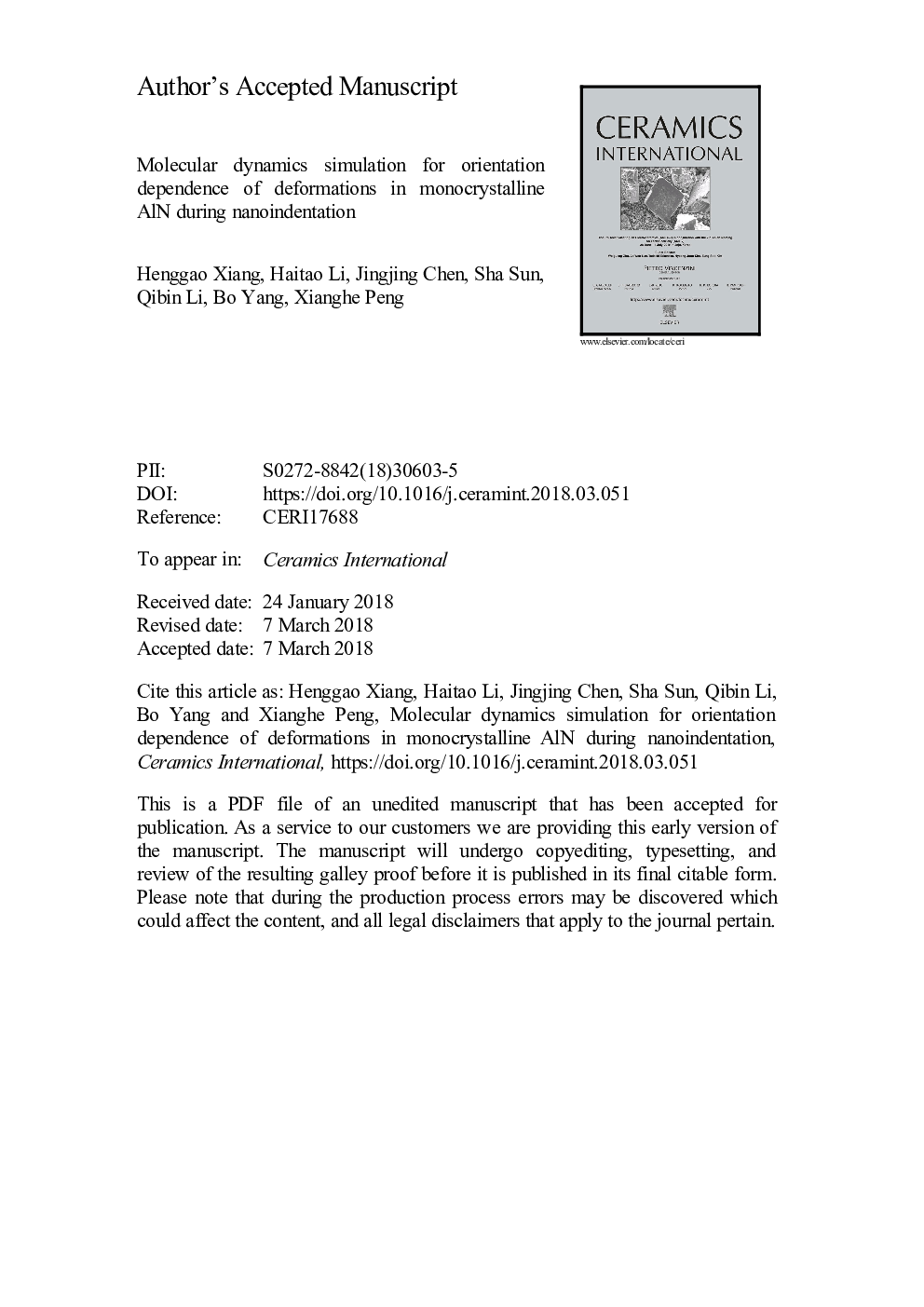| Article ID | Journal | Published Year | Pages | File Type |
|---|---|---|---|---|
| 7887122 | Ceramics International | 2018 | 24 Pages |
Abstract
Molecular dynamics simulations were performed for the nanoindentations using a virtual cylindrical indenter on monocrystalline aluminum nitride (AlN) with the indentation surface orientations of [0001], [101¯0], [1¯21¯0] and [1¯012¯], respectively, to investigate the orientation dependence of the material. Vashishta potential was used to model the interactions between Al-Al, N-N, and Al-N atoms in the specimens. Simulation results indicated that the deformation mechanism varies with surface orientations at the initial inelastic stage. In the specimens with the surface orientations of [0001] and [101¯0] phase transformation plays a predominant part, in the case of [1¯21¯0] dislocation slip dominates the inelastic deformation, whereas in the case of [1¯012¯] both phase transformation and dislocation slip act a leading role. However, the phase transformation and dislocation slip occur in all the samples during the further indentation. We found two paths of B4 to B1 phase transitions. Path I includes two steps: Al and N atoms move along the [0001] axis by an anti-parallel vertical motion, followed by horizontal relative movement of the two types of atoms. Path II is similar to Path I, but the sequence of relative movement of Al and N atoms is different. Path I occurs in the cases of [0001] and [1¯012¯] orientations, while Path II in the cases of the other two orientations.
Related Topics
Physical Sciences and Engineering
Materials Science
Ceramics and Composites
Authors
Henggao Xiang, Haitao Li, Jingjing Chen, Sha Sun, Qibin Li, Bo Yang, Xianghe Peng,
